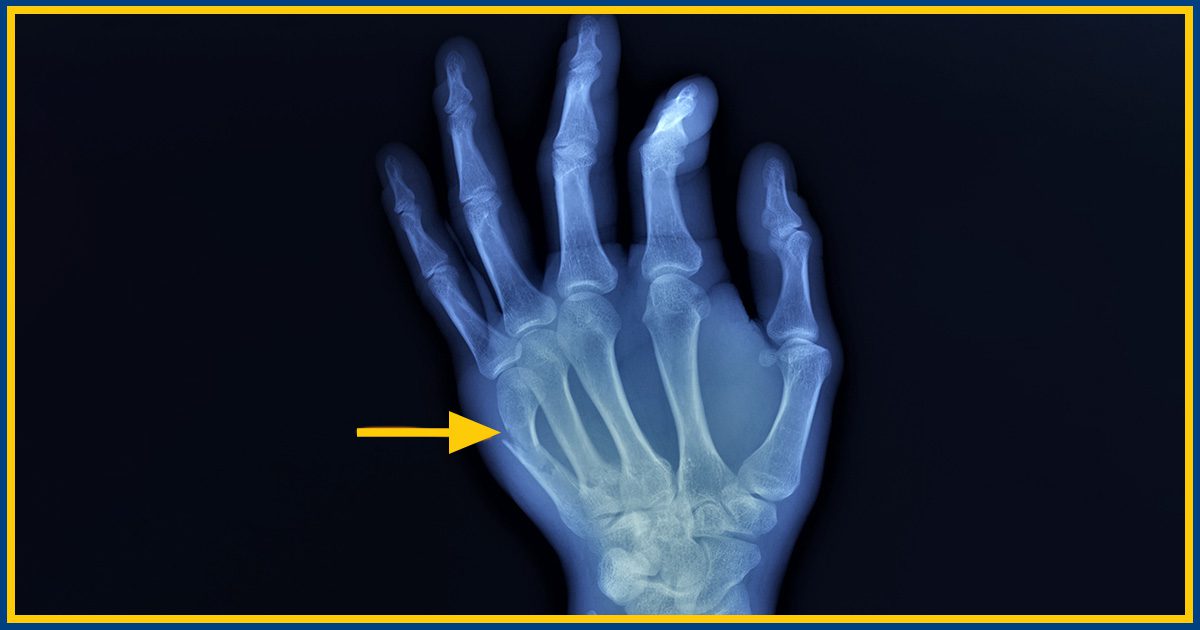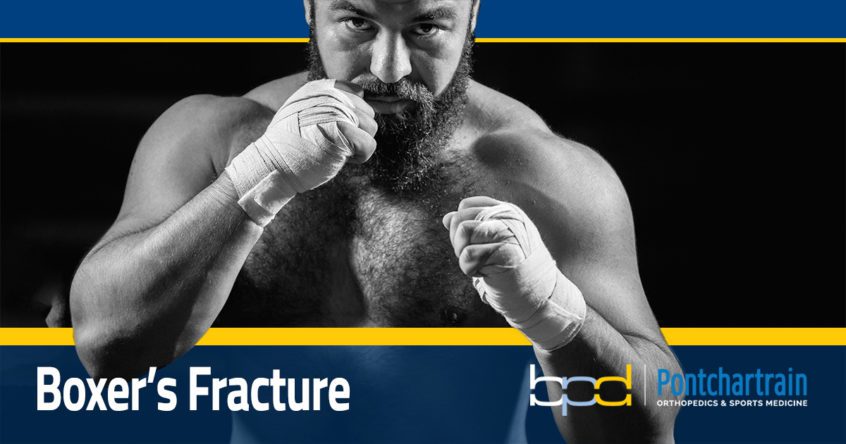What is a Boxer's Fracture?
How is the Fracture Diagnosed?
Symptoms of Boxer’s Fracture include pain and swelling around the knuckle of the little finger after some sort of trauma to the hand. The injury can also cause bruising and loss of knuckle contour, and it may be hard to extend the little finger. The pain may be accompanied by snapping or popping sounds. In cases of severe injury, the bones may be displaced so badly that the small finger overlaps, or "scissors" the ring finger when you form a fist.
To diagnose the issue, Dr. Donnelly will generally begin by having you explain what caused the injury and performing a physical exam to check for deformities, discoloration, movement, numbness or cuts. You may be asked to make a fist or move your hand. If he believes that you may have a fracture, an X-ray of the hand will be ordered. X-rays will usually be taken from different angles and directions so the doctor can properly assess the extent and type of break that you have.

Treatment Options
In most cases, Boxer’s Fracture can be treated by non-surgical means, but in cases of severe damage, surgery may be required. Most patients who have the injury looked after quickly and follow their doctor’s care advice and physical therapy suggestions have a good outcome with few lingering effects once the bone is healed.
Non-Surgical Treatment
The most common treatment for the injury is to use a cast, splint, or brace to stabilize the fracture so that it can heal properly. In cases where there is a lot of displacement of the bones, a procedure known as a closed reduction may be necessary. In a closed reduction, the broken bone is manipulated back into place without cutting the skin before a cast or splint is put in place. This can reduce swelling, lower the chance of infection and increase the chance that the finger will function normally once healed.
Surgical Treatment
If the bone is severely fractured or displaced, surgery may be needed to correct the problem. When surgery is required, an incision is made at the point of the fracture and pins or screws are placed in the bones to hold them in place while they heal. Physical therapy may be required once the hand begins to recover.
Concerned You Have a Boxer’s Fracture?
If you’ve had recent trauma to your hand and think you may have a Boxer’s Fracture, it’s important to have it looked at as soon as possible. The quicker the injury is treated, the more likely that it will heal fully. Request an appointment today at our Boutte or Metairie offices. If you need emergency care, Pontchartrain Orthopedics & Sports Medicine offers orthopedic urgent care for injuries that occur after hours Friday or on Saturday.

